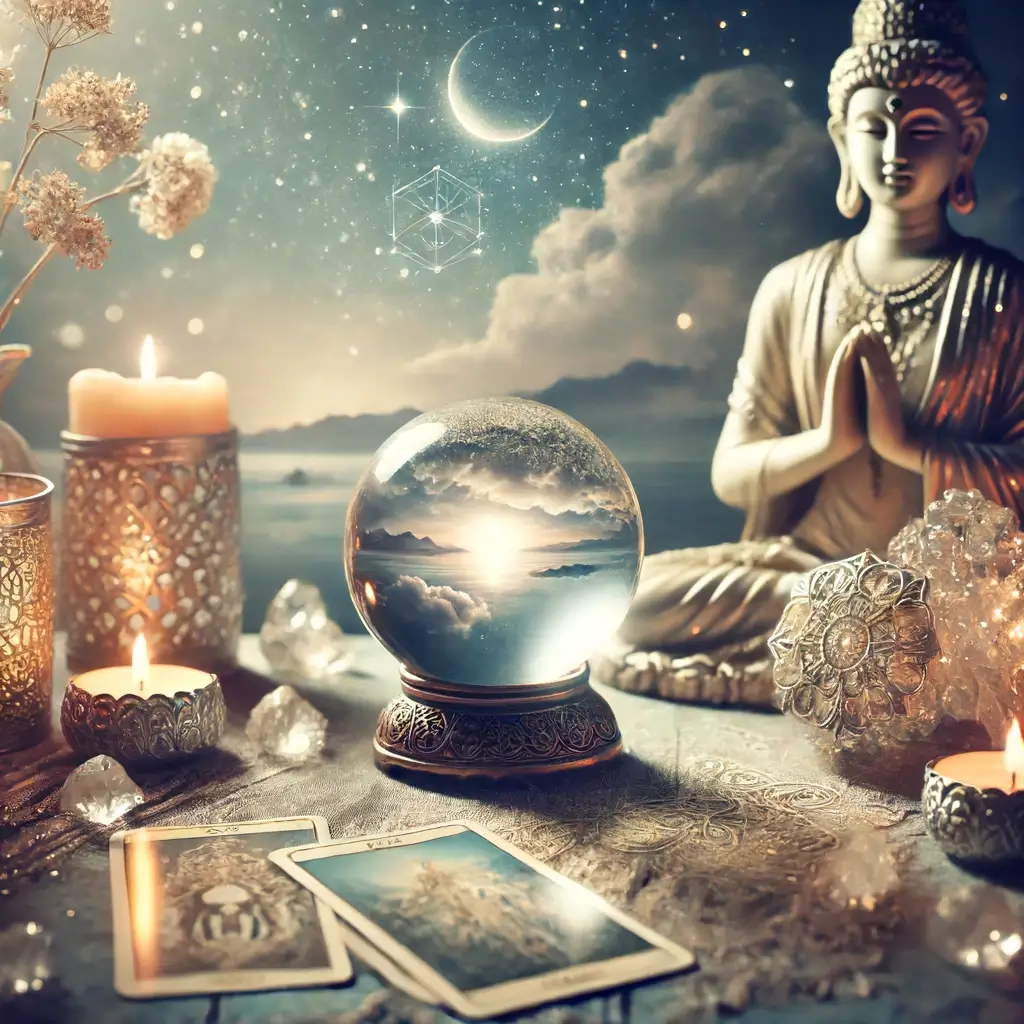Have you ever witnessed the mesmerizing beauty of a purple aurora lighting up the night sky?
We will explore the enchanting phenomenon of purple auroras, from what causes them to where you can see them.
Learn about the various types of auroras, including the renowned Aurora Borealis and Aurora Australis.
Discover tips on how to photograph a purple aurora and delve into fascinating myths and legends surrounding these ethereal lights.
Come along on a journey through the wonders of the natural world!
Key Takeaways on Purple Auora:
- A purple aurora is a natural light display in the sky caused by charged particles from the sun interacting with Earth’s atmosphere.
- Solar storms, solar wind, and Earth’s magnetic field are the main causes of a purple aurora.
- You can see a purple aurora in both the Northern and Southern Hemispheres, and it is one of the three types of auroras in addition to the Northern and Southern Lights.
What Is a Purple Aurora?
The phenomenon of a purple aurora, a celestial event commonly observed in the night sky, is a visually captivating occurrence that presents an array of vibrant colors and imbues a sense of positivity. This phenomenon is frequently linked to the notion of a ‘purple aura‘ within energy work and spiritual disciplines.
The captivating shades of purple displayed in an aurora, which range from deep indigos to delicate lavenders, evoke a feeling of mystique and awe. Purple has held symbolic significance in numerous cultures, representing themes of royalty, spirituality, and metamorphosis, embodying qualities of wisdom and enlightenment. Throughout history, ancient civilizations interpreted the sighting of a purple aurora as an indication of divine intervention or significant spiritual advancement.
From an emotional standpoint, the presence of purple light is believed to elicit emotions of introspection, creativity, and tranquility, rendering it a color frequently utilized in methodologies designed to alleviate and harmonize mental well-being.
What Causes a Purple Aurora?
A purple aurora phenomenon originates from intricate interplays among solar wind, Earth’s magnetic field, and particles in the upper atmosphere. These interactions produce breathtaking visual manifestations that numerous energy healers interpret as reflective of the universe’s purpose to harmonize energy.
1. Solar Storms
Solar storms play a significant role in the formation of purple auroras, and some theories suggest that their powerful energy emissions can impact human chakras, particularly the crown chakra, akin to the purpose of Reiki in harmonizing our energy fields.
Solar storms, which release charged particles from the sun, interact with the Earth’s magnetic field, augmenting the energetic bond between our planet and the cosmos. This heightened energetic interaction has the potential to resonate with individuals, influencing their crown chakra, a center linked to spiritual enlightenment and universal connection.
Just as Reiki practitioners channel healing energy to rebalance the body’s energy centers, the effects of solar storms on auroras and chakras serve as a poignant illustration of the interconnected nature of the universe and underscore the significance of maintaining equilibrium in our energy fields.
2. Solar Wind
The solar wind, characterized by a flow of charged particles emanating from the sun, has the capacity to induce the emergence of purple auroras. These phenomena are often perceived by individuals with heightened intuition as luminous purple manifestations that indicate alterations in intuitive understanding.
This natural occurrence transpires when the solar wind interplays with the Earth’s magnetic field, prompting the particles to collide with gas molecules within the atmosphere. The resultant interactions generate light emissions, giving rise to the captivating radiance of the auroras. The hue of purple, emblematic of intuition and spirituality, amplifies the enigmatic appeal of these celestial occurrences.
It is commonly believed that observing such celestial exhibitions may instigate subtle energetic transformations within the observer, fostering a deeper connection to the imperceptible energies that govern the universe.
3. Earth’s Magnetic Field
The Earth’s magnetic field plays a crucial role in the formation of auroras, which are atmospheric phenomena that some empaths associate with heightened emotional states and the generation of positive energy.
The interaction between solar wind particles and the Earth’s magnetic field gives rise to the captivating display of colors in the sky known as auroras. This phenomenon often evokes a sense of awe and wonder in observers. Empaths frequently express a profound connection to these natural occurrences, ascribing feelings of vitality and rejuvenation to the energy released during aurora events. This spiritual affinity with the Earth’s magnetic field can lead to an increased sense of emotional well-being, fostering a deeper understanding of the interconnectedness of all living entities.
Where Can You See a Purple Aurora?
Purple auroras are observable phenomena present in both the Northern and Southern Hemispheres. Prominent experts in the field of aura reading assert that these geographical regions have a positive influence on individuals’ spiritual self-awareness and connection.
1. Northern Hemisphere
In the Northern Hemisphere, countries such as Norway, Canada, and Iceland are renowned for being optimal locations for observing purple auroras, a spectacle that holds significance for many individuals, including Reiki practitioners such as Lillie Marshall.
The enchanting display of purple auroras gracefully dancing across the night sky has entranced spectators for centuries. Reiki practitioners who undertake journeys to these celestial destinations frequently report experiencing a profound sense of connection to the universe and its enigmatic energies.
During these transcendent moments, the radiant purple hues of light are thought to stimulate the crown chakra, promoting spiritual enlightenment and inner tranquility. The synchronization of the awe-inspiring exhibition of auroras with the spiritual practices of the practitioners establishes a deep-seated harmony that transcends the confines of the physical world.
2. Southern Hemisphere
Southern Hemisphere locations, such as certain parts of Australia and New Zealand, provide distinct opportunities to observe purple auroras. Followers of Kundalini and Usui Reiki doctrines believe that witnessing these phenomena can heighten one’s spiritual sensitivity.
The breathtaking spectacle of purple auroras in these regions not only captivates the eye but also serves as a profound symbol of the intrinsic connection between the physical and spiritual domains. Practitioners of Kundalini and Usui Reiki frequently report that observing such natural marvels enriches their comprehension of energy circulation, alignment of chakras, and the significance of nurturing an elevated state of consciousness.
These encounters in the Southern Hemisphere act as potent stimulants for personal development, prompting individuals to access their inner wisdom and embrace the transformative energies present in the universe.
What Are the Different Types of Auroras?
Auroras manifest in diverse forms, each emblematic of a distinct segment of the aura spectrum. The violet aurora is frequently linked with heightened spiritual consciousness and the stimulation of various chakras.
1. Aurora Borealis (Northern Lights)
The Aurora Borealis, commonly known as the Northern Lights, not only captivates spectators but is also believed by certain empaths to have an impact on emotional states and serve as a source of inspiration for creative endeavors.
This natural occurrence, characterized by its vibrant and dynamic display of lights in the night sky, possesses a hypnotic quality that resonates deeply within individuals. For empaths, the ever-shifting hues and intricate patterns of the Aurora Borealis can elicit a spectrum of emotions, ranging from tranquil calmness to invigorating delight. Many empathetic individuals seek solace and creative stimulation in the otherworldly beauty of these lights, utilizing them as a wellspring of artistic motivation and a means to channel their emotional experiences into various art forms such as music, visual arts, or other modes of expression.
2. Aurora Australis (Southern Lights)
The Aurora Australis, also known as the Southern Lights, frequently exhibits light purple shades that various perceptive individuals, including professionals such as Gwen Dittmar, interpret as a symbol of heightened awareness.
The breathtaking display of the Aurora Australis takes place in the dark skies of the southern hemisphere, captivating the interest of those who observe its otherworldly splendor. Gwen Dittmar stresses that the dancing lights elicit feelings of spiritual connection and introspection.
As the vivid hues swirl and transform across the nocturnal expanse, it is theorized that the Aurora Australis symbolizes change and underscores the importance of relying on one’s intuition. Dittmar proposes that witnessing this celestial marvel can foster a profound comprehension of one’s position in the universe.
3. Aurora Polaris (Polar Lights)
The term “Aurora Polaris,” encompassing both Borealis and Australis, is commonly utilized by esteemed practitioners in the field of energy work to characterize these natural phenomena as sources of positive energy.
Individuals who possess expertise in energy work frequently regard the Aurora Polaris as a profound force that possesses transformative capabilities. As per the accounts of numerous adept practitioners, witnessing the graceful movements of the Aurora Polaris can evoke a profound sense of tranquility and align one’s energy fields.
Esteemed healers and energy workers have relayed notable anecdotes concerning the therapeutic attributes of the Aurora Polaris, with clients reporting experiences of emotional catharsis, physical recuperation, and spiritual elevation subsequent to exposure to its radiant energy.
How Can You Photograph a Purple Aurora?
Capturing a purple aurora can serve as a highly rewarding creative pursuit for photographers, demanding a fusion of technical expertise and artistic vision, akin to the methodology promoted by Rich Roll in his body of work.
1. Camera Settings
To accurately capture the vibrant hues of a purple aurora, possessing intuitive knowledge of camera settings such as ISO, aperture, and shutter speed is imperative.
Understanding the manipulation of the ISO setting is fundamental in accurately depicting the luminosity of auroras. Selecting a higher ISO, ranging from 800 to 1600, can offer adequate sensitivity to light while mitigating the risk of excessive noise.
The aperture, typically adjusted to a range between f/2.8 and f/5.6, plays a pivotal role in determining the depth of field and regulating the amount of light that enters the camera. By coupling a wider aperture with a slower shutter speed, usually around 10 to 30 seconds, photographers can effectively capture the ethereal spectacle of colors dancing across the night sky.
Mastery of these settings enables photographers to eloquently translate the captivating beauty of auroras into visually striking works of art.
2. Tripod
Utilizing a tripod is essential in energy work photography, as it ensures stability and clarity in capturing images, offering benefits that are not only aesthetically pleasing but also potentially therapeutic for the artist.
A tripod functions as a stabilizing agent for the camera, permitting the extended exposure times required for capturing the intricate movements of phenomena such as the aurora borealis. Similar to how a tripod provides a secure platform for the camera to document the celestial light display, the concept of inner stability and equilibrium is fundamental in energy work. This foundation is vital for individuals to delve into and harness their personal energy effectively. By establishing a solid base, practitioners can engage in their spiritual endeavors with confidence and concentration, mirroring the steadying effect a tripod has on a camera to produce captivating and impactful imagery.
3. Remote Shutter Release
A remote shutter release is an essential tool that can significantly improve the quality of aurora photography by reducing camera shake. This technique, endorsed by photographers such as Herstik, is lauded for its ability to capture precise interpretations of purple auras.
This device enables photographers to remotely trigger the camera, thereby minimizing any movement that could potentially result in blurred images, particularly in low-light situations. Herstik underscores the significance of achieving clarity in representing the unique hues of purple auroras, which are often fleeting and challenging to capture accurately.
By employing a remote shutter release, photographers can maintain a stable hand position, leading to sharper, more focused images that effectively showcase the enchanting beauty of the night sky.
What Is the Best Time to See a Purple Aurora?
The most opportune occasion to observe a purple aurora is during phases of heightened solar activity, as frequently advised by esteemed professionals well-versed in the nuances of purple auras and their reactions to varying circumstances.
Throughout these periods, the interaction between charged particles emitted by the sun and Earth’s magnetic field culminates in the manifestation of vivid displays featuring purple tones in the nocturnal expanse. Practitioners adept in aura reading commonly interpret purple auras as emblematic of spiritual enlightenment, creativity, and a profound alignment with one’s higher consciousness. Consequently, beholding a purple aurora amidst optimal viewing conditions may be regarded as a poignant and propitious omen for individuals actively pursuing spiritual development and introspective contemplation.
How Long Does a Purple Aurora Last?
The duration of a purple aurora can range from a brief span of a few minutes to an extended period of several hours. This variability is contingent upon a variety of atmospheric conditions, a subject commonly deliberated by authorities in the field such as Esther Perel, who specialize in examining traits associated with purple auras.
A pivotal determinant that can affect the duration of a purple aurora is the intensity of the solar wind’s interaction with Earth’s magnetic field. When the solar wind exhibits heightened strength and carries an elevated concentration of charged particles, it has the potential to incite more pronounced and lengthier occurrences of auroras.
Furthermore, the positioning of the aurora in the sky is a contributing factor, as displays situated directly overhead typically endure for a greater duration compared to those situated closer to the horizon. Additionally, the level of geomagnetic activity serves as a determining factor in the visibility duration of a purple aurora, with heightened levels of activity frequently correlating with prolonged periods of observation.
What Are Some Myths and Legends About Purple Auroras?
There exist numerous myths and legends surrounding purple auroras, many of which purport that they possess the ability to influence one’s romantic relationships, personality traits, and stimulate creative endeavors.
These enigmatic narratives have been interwoven into various cultural and belief frameworks, with some associating purple auroras with the goddess of love and desire, while others interpret them as emblematic of artistic inspiration.
Within Norse mythology, purple auroras were regarded as the Valkyries traversing the nocturnal expanse, shepherding warriors toward their fated love interests. Conversely, in Native American folklore, it is posited that observing a purple aurora can rouse latent creativity within individuals, igniting fresh concepts and fervors.
Frequently Asked Questions
What is a purple aurora?
A purple aurora is a natural phenomenon in the Earth’s atmosphere where charged particles from the sun collide with gases in our atmosphere, causing a colorful display of lights.
How is a purple aurora created?
A purple aurora is created when solar wind particles, mostly electrons, interact with the Earth’s magnetic field and collide with atoms and molecules in our atmosphere, causing them to emit light.
Where can I see a purple aurora?
A purple aurora can typically be seen in the high-latitude regions of Earth, such as the Arctic and Antarctic. However, strong solar activity can sometimes make it visible in lower latitudes as well.
What causes the different colors in a purple aurora?
The different colors in an aurora are determined by the type of gas molecules that the solar particles collide with. Purple is often created when the particles interact with nitrogen molecules.
Is there a specific time of year to see a purple aurora?
Auroras can occur year-round, but they are most commonly seen during the winter months in the Northern Hemisphere and the summer months in the Southern Hemisphere.
Can a purple aurora be harmful to humans?
While auroras are a beautiful sight to see, they are not harmful to humans. The charged particles that create the aurora are too high in the atmosphere to affect us on the ground.


